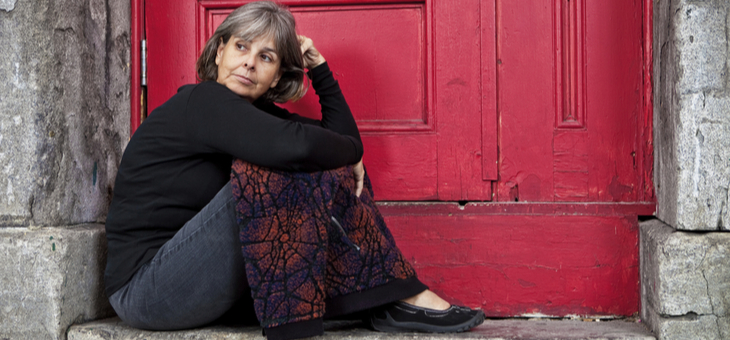For years, advocates have been warning that older Australian women face a homelessness crisis. But does anyone care?
Commentator, writer and lecturer Jane Caro, writing for The Guardian, says no.
“I don’t want to believe our government is using the pandemic to shove women, especially mothers, back into the kitchen and back into financial dependence of their husbands, I really don’t. But when you put it all together, it’s hard not to reach that conclusion.
“Whether they want to think about it or not, younger women are now facing at least as high a risk of a desperately poor old age as their mothers and grandmothers did. Not thanks to COVID, but thanks to government policy.
“Why is it the only people who seem to notice are older women themselves?”
Ms Caro says when she speaks publicly about women over 45 being the fastest growing group among the homeless, it is other older women who respond.
She says the hopes and optimism of these people have “turned to ashes”.
In May, the federal government’s Workplace Gender Equality Agency (WGEA) released a report on the Gendered Impact of COVID19. But the government, and its subsequent Budget, have not addressed the issue.
The facts are:
- Women over 55 are the single largest demographic group accessing welfare payments.
- The number of women over 55 on JobSeeker-type payments has risen by more than 60 per cent in the past year.
- Women retire with just over half the superannuation savings than men do and one in three women retires with no super
- Women’s working hours fell by 7.3 per cent between March and June 2020, while men’s fell by 6.5 per cent.
- Women suffered a 5.2 per cent drop in full-time employment between February and June 2020; for men, it was 3.8 per cent.
Women lost more jobs due to the pandemic, as more had insecure casual work in the industries hardest hit by lockdowns such as retail and hospitality. More older women are reliant on the pension, fewer have sufficient superannuation, and Australia’s exorbitant childcare costs entrench employment disadvantages.
Rather than tackle any of these matters, the government’s coronavirus stimulus measures targeted male-dominated industries such as construction.
“The government has used its old toolkit, which is a male toolkit, and it hasn’t focused on female jobs,” Angela Jackson, an economist at Equity Economics, told The New Daily.
She urged an increase in funding for the aged care sector, which employs more women than men.
“We know the royal commission is going to recommend additional funding to increase quality of care, which is going to mean more jobs,” Ms Jackson said.
“And I think funding that increase today, rather than waiting 18 months, would generate new jobs that are needed in the industry, as we need to be providing quality aged care, and it would also support female employment.”
ProBono Australia says aged care, long neglected by governments, is a gender issue.
“Almost 70 per cent of COVID-19 deaths have been in aged care. This catastrophic situation is the result of federal government policy over decades to divest itself of responsibility for aged care. That this divestment has been able to proceed over so many years without public outcry raises questions of how much Australia values its old people. And more specifically, whether it values ageing women, since the majority of older Australians are female.”
Researchers Debbie Faulkner and Laurence Lester told The Conversation older people who don’t own homes, have limited wealth and savings and don’t live in social housing are at the mercy of the private rental market. This puts them at “considerable risk of housing affordability stress and hence homelessness”.
Their research found older women are more likely to be at risk of homelessness if they have one or more of the following characteristics:
- have been at risk before
- are not employed full-time
- are an immigrant from a non-English-speaking country
- are in private rental housing
- would have difficulty raising emergency funds
- are Indigenous
- are a lone-person household
- are a lone parent (but little evidence for those never married).
Since the 2008 global financial crisis, the risk of homelessness was as follows:
- for women aged 55–64 in a private rental, about 28 per cent are likely to be at risk
- for women who are also not employed full-time, the percentage at risk increases to about 34 per cent
- for those who are also a lone parent, the risk rises to more than 65 per cent
- the risk increases to more than 85 per cent if, in addition, they have experienced at least one prior occurrence of being at risk.
Ms Faulkner and Mr Lester say that unless there are policy changes, these rates will increase, because female lone-person households are predicted to rise by between 27.6 per cent and 58.8 per cent by 2041.
Their conclusion is simple: more “appropriate, affordable” homes for older people.
This is crucial because up to 30 per cent of the newly unemployed or underemployed during the pandemic were aged between 51 and 65. Of these 400,000 Australians, the majority are women and, due to age discrimination, “most are unlikely ever to work again”.
Quoting some of the numbers above, Jane Caro asks: “These figures are grim, but has anyone noticed? Is there an outcry? Does anyone – apart from the women themselves – actually care?”
Do you believe the government is doing enough to help older women? If not, what else could it be doing?
If you enjoy our content, don’t keep it to yourself. Share our free eNews with your friends and encourage them to sign up.
Related articles:
https://www.yourlifechoices.com.au/finance/superannuation/women-and-superannuation
https://www.yourlifechoices.com.au/lifestyle/leisure/women-we-admire-and-love
https://www.yourlifechoices.com.au/finance/superannuation/womens-financial-health-at-greater-risk

